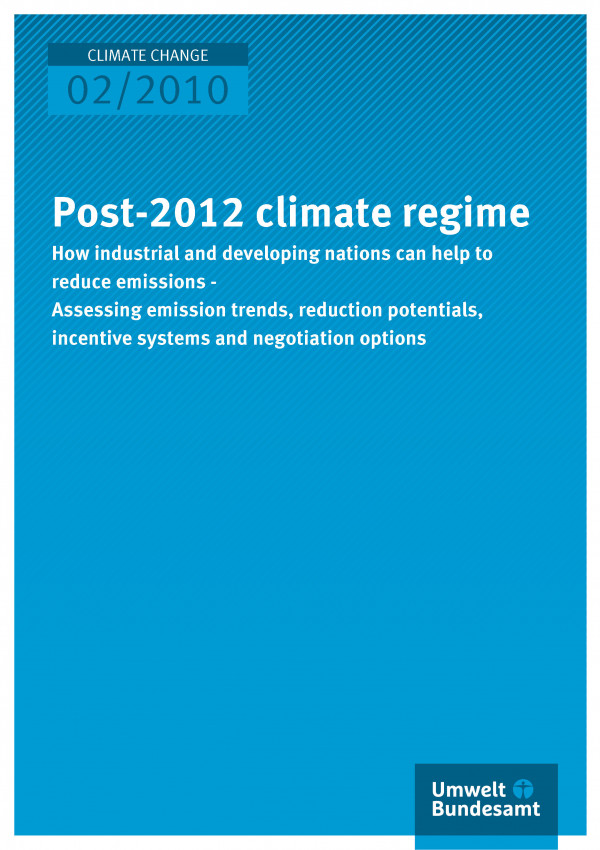According to the IPCC fourth assessment report (2007), global carbon dioxide emis-sions need to be reduced by at least 50 to 85% in 2050 compared to 2000 levels if the increase in global surface temperature is to be limited to 2°C compared to pre-industrial levels. The IPCC also suggests intermediate greenhouse gas emission targets for 2020, including a range of 25% to 40% emission reductions compared to 1990 for the group of Annex I countries and a ‘substantial deviation from baseline in Latin America, Middle East, East Asia and Centrally-planned Asia’ (IPCC 2007, p. 776). For develop-ing countries, a reduction range of 15 to 30% below baseline has been suggested (den Elzen and Höhne 2008).

Climate | Energy
Post-2012 climate regime
How industrial and developing nations can help to reduce emissions -
Assessing emission trends, reduction potentials, incentive systems and negotiation optionsSeries
Climate Change | 02/2010
Number of pages
62
Year of publication
Author(s)
Vicki Duscha, Jakob Graichen, Sean Healy, Joachim Schleich, Katja Schumacher
Language
English
Project No. (FKZ)
3707 41 103
Publisher
Umweltbundesamt
File size
2918 KB
Price
0,00 €
Print version
not available
rated as helpful
267

